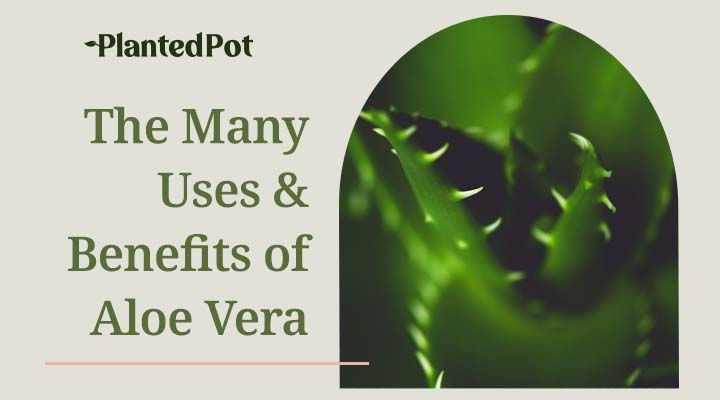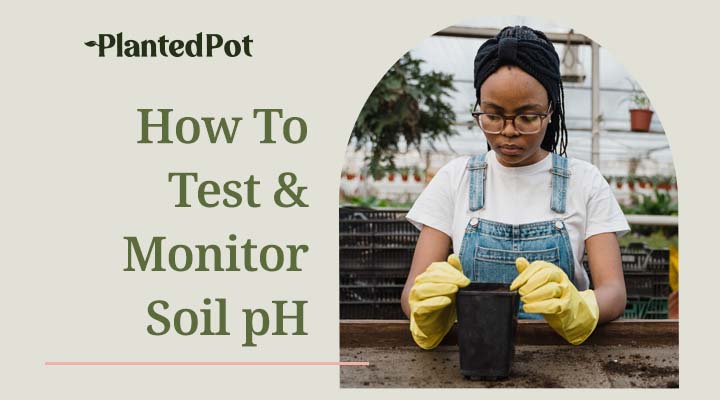
What Is Soil Made Of? How Proper Dirt Makes The Best Plants
Home / What Is Soil Made Of? How Proper Dirt Makes The Best Plants
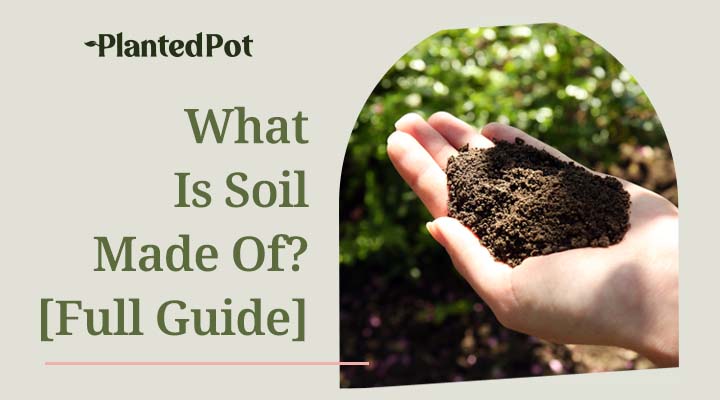
What Is Soil Made Of? How Proper Dirt Makes The Best Plants
- Olivia Richman
- November 17, 2021
- 10:20 am
- No Comments
Soil is what keeps plants alive! It’s found on the surface of the earth; you walk or bike on it; plant gardens on it, with it, in it. But what is soil made of? From organic matter to water and air, soil formation is a natural process that happens over time based on its environment.
Soil properties and topsoil texture are all due to the elements that make up the topsoil. Each type of topsoil works a little bit differently, making each one better for certain types of plants. Here is everything you need to know about topsoil types and how to pick the right one for your garden.
What Is Soil?
Soil is vital to all life on earth, especially plant life. It’s made up of minerals, water, air, organic matter, and the remains of once-living organisms. Topsoil is impacted by environmental factors, including rain and temperature.
Topsoil provides plants with the nutrients they need to grow and thrive. It also provides a habitat for animals and organisms, of course. Soils emit and absorb gases (like carbon dioxide and methane) that change the atmosphere. It also absorbs, holds, releases alters, and purifies water.
Related: Best Potting Soil [How To Pick the Right Mix for Your Plants]
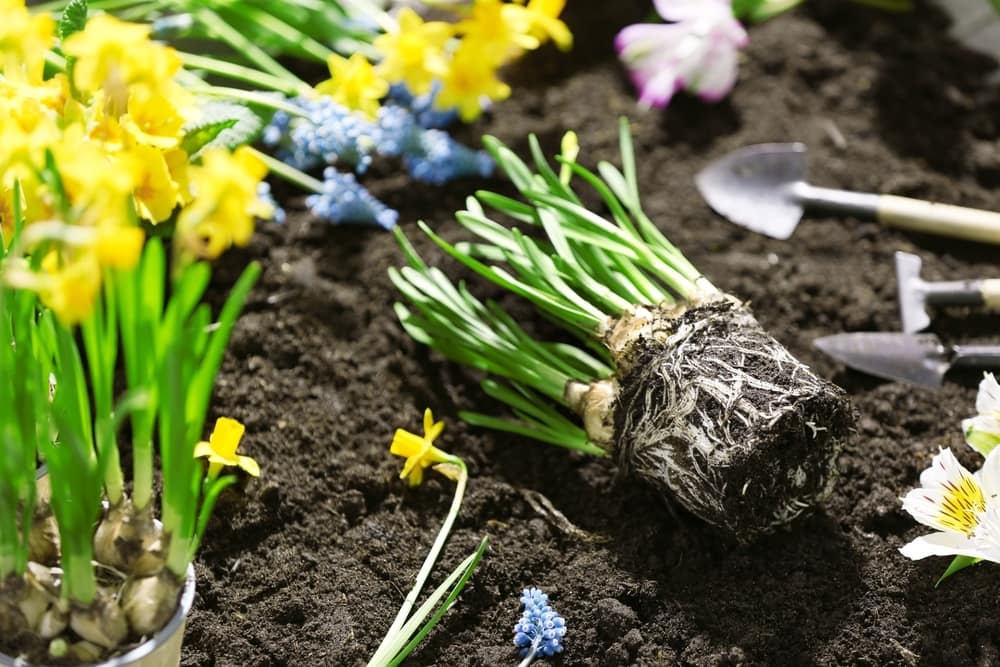
Is All Soil the Same?
No! Topsoil is directly impacted by the environment and climate, meaning soil can form differently depending on where and what’s around it.
Each type of topsoil has different characteristics that help different plants and organisms. Some topsoil types are more effective for certain types of plants due to their textures, how they interact with water and temperature, and what elements they are made up of.
What Are the Most Common Types of Soils?
There are six major types of ground to be aware of. Each of them is made up of a different topsoil formation, giving them different textures and behaviors.
- Sandy: Made up of sand and a little bit of clay, this soil is light, warm, and try. It’s low in nutrients and has quick water drainage. Sandy topsoil quickly warms up in the spring but can dry out in the summer, especially when it rains. Sandy topsoil is easy to work with, making it a popular dirt types in gardens.
- Clay: This is heavy topsoil that has high nutrients. The abundance of clay keeps it wet and cold in the winter and dry in the summer. The space between the clay topsoil particles allows the soil to hold a lot of water. Clay topsoil drains slowly and can take a long time to warm up.
- Silt: This light topsoil is very popular with gardeners because it drains and holds moisture well. The particles are fine and easily compacted, meaning they can wash away with rain. Some people add organic matter to make it a bit more stable.
- Peat: This topsoil type is high in organic matter and retains a large amount of moisture. Gardeners will import this formulation because it works so well for planting.
- Chalk: Due to the calcium carbonate within, chalk soil is highly alkaline and doesn’t support plants that require acidity to grow. Some chalky topsoil has visible white lumps, which means it can’t be acidified.
- Loam: This formulationl is a mixture of sand, silt, and clay. These types combined create an effective topsoil type that’s fertile, easy to work with, and has good drainage.
How Does Soil Form?
Soil forms slowly over time from the gradual breakdown of rocks through weathering. Weathering occurs physically, chemically, or biologically:
- Physical weathering includes temperature changes and collisions.
- Chemical weathering includes reactions to water and air.
- Biological weathering is when rocks are broken down by living things like burrowing animals or growing plant roots.
When these materials accumulate slowly over time, sometimes tens of thousands of years, it creates topsoil. Soil is made up of five major types of material:
- Parent material: The basis of topsoil is formed from minerals produced by rocks through weathering and erosion. The types of parent materials impact the properties of the topsoil. For example, granite soil is often sandy.
- Organisms: Plants, bacteria, fungi, bugs, animals, and even humans help form soil. Plants die in the soil, leaving roots and leaves behind. Add animal waste and bodies to the topsoil. Bacteria, worms, and other creatures break down the plant roots and animal waste, becoming organic matter like peat or charcoal.
- Climate: The temperature will impact the rate of weathering and organic decomposition. For example, colder climates create a slower process. Hot and humid climates create topsoil more rapidly. Rainfall will also change the dirt layers.
- Topography: A slope’s shape and grade will affect the drainage of the topsoil. Water, gravity, and wind play a factor in transporting dirt differently depending on the topography.
- Time: Soil is continuously weathered over time, the properties changing as time goes on.
What Are the Layers of Soil?
Dirt is made up of layers, forming what’s called a “soil profile.” These layers are called horizons, each one telling a different story of the earth’s history. Here are the main layers of soil!
- O (Organic): This layer can be thick or thin, composed of decomposed organic matter. This includes plant roots and leaves, fecal matter, and dead animals (including humans).
- A (Topsoil): This layer is mostly minerals with some organic matter. This is an important layer for the survival of plants and other organisms.
- E (Eluviated): Found in older soils and forest soils, this layer consists of sand and silt particles of quartz.
- B (Subsoil): Subsoil is rich in materials leached from the topsoil and eluviated layers. They will accumulate here, making up the B horizon.
- C (Parent Material): Known as the layer where soil develops.
- R (Bedrock): This layer is a mass of rocks (granite, quartzite, limestone, sandstone, etc.) forming the parent material for some gravel.
What Does Soil Do?
Soil maintains life on earth as we know it — it provides a habitat for fungi, bacteria, insects, and burrowing animals while helping plants grow big and strong. More so, dirt recycles raw materials and filters water, often the cornerstone of engineering projects, like buildings and roads.
Soil does the following for plants:
- Anchorage: Soil stabilizes plants when their root systems extend downward into the soil.
- Oxygen: The spaces between soil particles provide oxygen to plants, helping plants break down sugars and release energy to grow.
- Water: This space between topsoil particles also contains water, which then moves up through the plants. It has essential nutrients plants need to thrive and provides the material needed for photosynthesis.
- Temperature Modification: Soil insulates roots from drastic fluctuations in temperature, helping plants survive cold or hot times of the year.
- Nutrients: These nutrients help plants stay healthy, promoting growth.
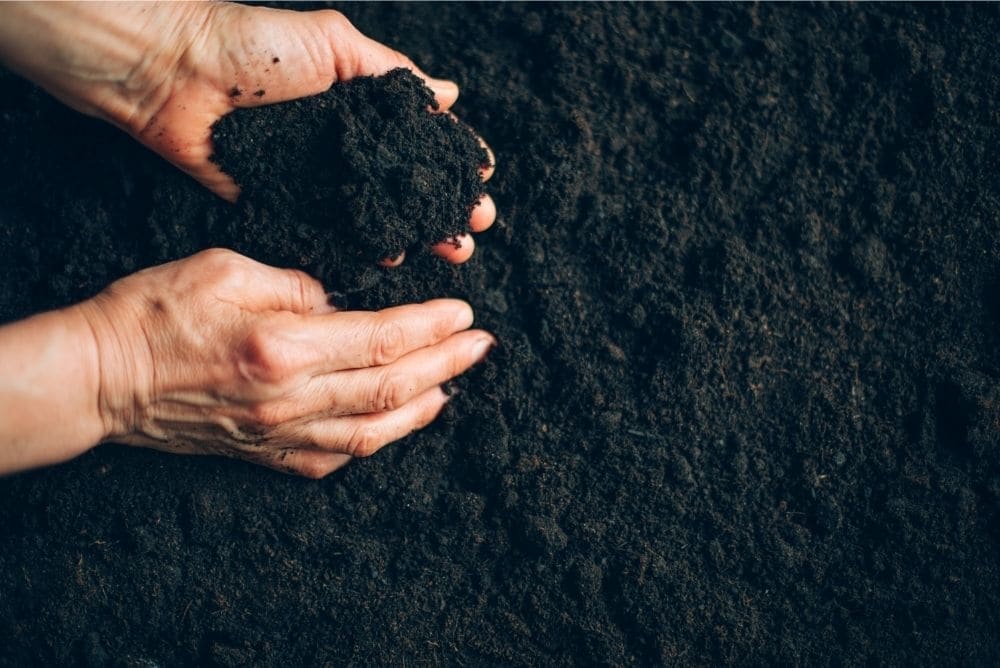
What Is Soil Made Of?
While there are different types of dirt, most of them contain similar ingredients. All of these ingredients react to each other slowly and constantly. Here are the most common materials you will find in the earth.
- Mineral particles
- Organic materials
- Air
- Water
- Living organisms
Can You Make Your Own Soil Mix At Home?
Packaged potting soil is very convenient. But for gardeners and plant lovers looking to save money, making your own dirt at home is a great cost-effective alternative!
Packaged potting soil often contains peat moss, perlite, and vermiculite. But you can use cured compost, leaf mold, and rotted sawdust, sand, fertilizer, as well as many other organic ingredients, to create your own batch of soil!
Mix a large volume of homemade potting soil in a cement mixer or spinning compost tumbler. Looking for smaller quantities? Blend the ingredients inside a wheelbarrow, tub, or even a large bucket. Always make sure to mix the soil thoroughly to complete the formation.
Related: Indoor Plant Soil: A Tool To Get Your Plant To The Next Level
Final Thoughts – What Is Soil Made Of?
Dirt is everywhere, but rarely do we ever consider it — it’s just there. On a trail or trying to get the dirt off our new white socks. But what is soil made of?
Organic matter, water, air, and other natural elements make up most dirt, creating a few types of earth that carry different textures, capabilities, and benefits. You can even make your own potting dirt at home if you have the right ingredients, ensuring your soil is perfect for your specific plants! If you want to learn more about soil and plants check out these resources.
Read Next: Soil Mites [Why They May Actually Be Great For Your Plant!]


